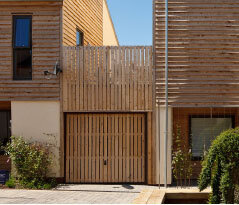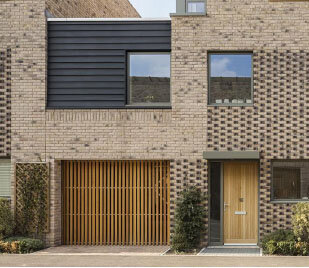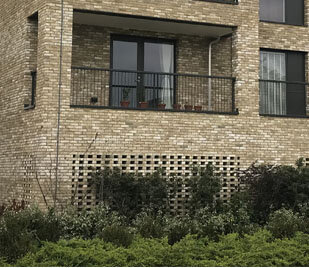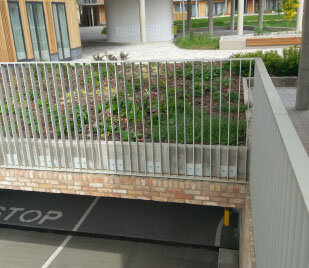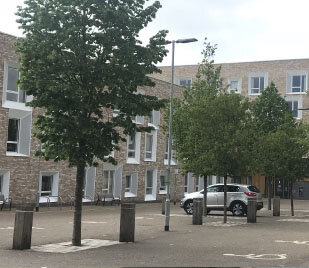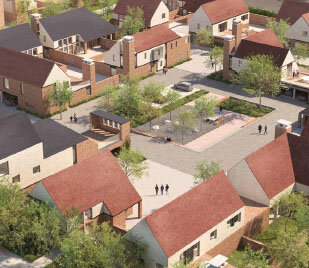The location of parking is critical to balancing the desires of individual residents to own and conveniently park a car, and the collective desire of the community for Garden City type streets that support safe walking and cycling by everybody.
The location of parking becomes even more important when considering the likely flux in car use, car ownership and thus parking demand, when framed against emerging travel behaviours, new transport technologies, the increasing urbanisation of the local area , and the global threat of climate change.
The guidance aims to deliver parking provision that is sensitively designed into location(s) within the neighbourhood, street and site that doesn’t undermine the attractiveness of green, garden city streets, or the propensity to walk, cycle or use sustainable transport for local journeys.
This guidance builds on the ‘Car Parking : What works where’ guidance to define EDC’s preferred parking solution matched to a specific dwelling type / access scenario.
Parking in the neighbour-hood
G20 Diversity : Provide a range of neighbourhood, street and on-plot parking solutions.
G21 Neighbourhood led : Provide sufficient parking to meet the collective demand for parking across the neighbourhood, rather than aiming to meet the parking demand within each individual site.
G22 Interim approaches : Masterplans should consider where unallocated parking spaces could be efficiently grouped together within a regularly shaped parcel of land within the neighbourhood, to provide interim parking that can be-purposed as parking demand reduces.
This approach would provide enhanced flexibility to either provide additional parking provision in the longer term (through decking over ), or if parking demand reduced, could become additional open space, or a development plot.
Recent approaches to residential parking provision have tended to pepper-pot allocated parking around developments, prioritising allocated on-plot spaces over unallocated street based parking. However this approach may prove inefficient in the future, making it difficult to re-use or re-purpose this land when no longer needed for parking.
Parking approaches therefore need to consider the need for flexibility at the site, street and neighbourhood levels, to minimise the amount of land locked-in to private parking, and allow for more efficient management of space as pasterns of car use and ownership change.
parking in the street
G23 Use Ebbsfleet Public Realm Strategy street layouts to ensure generous on-street parking.
Generous on-street parking could support reduced “on-plot” provision. This would result in wider overall street corridors to accommodate the parking areas, but the linear nature of this would mean that these areas could be re-purposed if and as the parking demand diminished. As a wide corridor would exist there would be a range of options for re-use of this land, which would add value to the local community.
G24 : Consider the provision of on-street charging facilities within the street / public realm (see vehicle charging guidance for further details)
There are significant challenges to providing rapid charging to the entire vehicle fleet in the short to medium term. Grid capacity and management issues mean that it may not be feasible to allow unlimited charging from every domestic property. Hence, making provision for rapid charging stations is easier and more cost effective if this activity can be grouped into key locations where the infrastructure can be focused.
Parking
on site
G25 Use the Ebbsfleet parking matrix (below) to establish the most appropriate parking solutions for the site. .
The choice of solution should be determined by an assessment of the following conditions ;
House types
Street typology
Access type ( Front or rear)
G26 For houses, aim to limit on-plot parking to a single parking bay which can either be incorporated to the side of the dwelling, or within the footprint of the dwelling.
A second parking space may be provided through a tandem layout, with the second space located either to the side of the dwelling, or via a drive-through solution, within the rear garden garage section for full requirements) The growth of the ‘built-to-rent’ / private rental sector, which is not predicated on a need for parking to market the development, is helping to reduce parking provision.
G27 When a garage is provided, it should not extend beyond the front or rear elevation of the house, and meet the design requirements set out under the garage design section.
G28 Locate parking in convenient locations that are viewable from associated dwellings, that do not impact on the safety, security and attractiveness of streets and public spaces.



